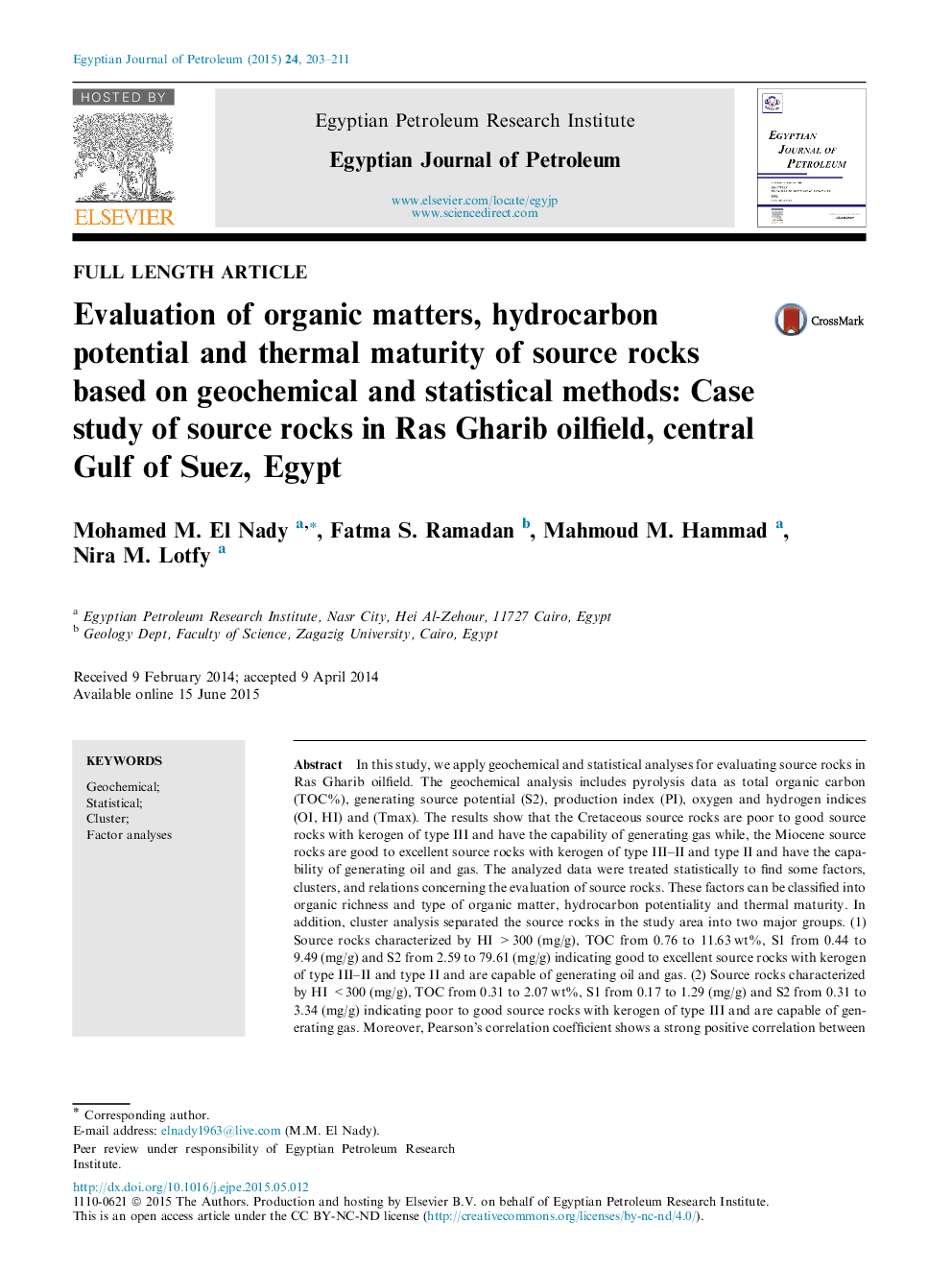| Article ID | Journal | Published Year | Pages | File Type |
|---|---|---|---|---|
| 1756859 | Egyptian Journal of Petroleum | 2015 | 9 Pages |
Abstract
In this study, we apply geochemical and statistical analyses for evaluating source rocks in Ras Gharib oilfield. The geochemical analysis includes pyrolysis data as total organic carbon (TOC%), generating source potential (S2), production index (PI), oxygen and hydrogen indices (OI, HI) and (Tmax). The results show that the Cretaceous source rocks are poor to good source rocks with kerogen of type III and have the capability of generating gas while, the Miocene source rocks are good to excellent source rocks with kerogen of type III-II and type II and have the capability of generating oil and gas. The analyzed data were treated statistically to find some factors, clusters, and relations concerning the evaluation of source rocks. These factors can be classified into organic richness and type of organic matter, hydrocarbon potentiality and thermal maturity. In addition, cluster analysis separated the source rocks in the study area into two major groups. (1) Source rocks characterized by HI >300 (mg/g), TOC from 0.76 to 11.63Â wt%, S1 from 0.44 to 9.49 (mg/g) and S2 from 2.59 to 79.61 (mg/g) indicating good to excellent source rocks with kerogen of type III-II and type II and are capable of generating oil and gas. (2) Source rocks characterized by HI <300 (mg/g), TOC from 0.31 to 2.07Â wt%, S1 from 0.17 to 1.29 (mg/g) and S2 from 0.31 to 3.34 (mg/g) indicating poor to good source rocks with kerogen of type III and are capable of generating gas. Moreover, Pearson's correlation coefficient shows a strong positive correlation between TOC and S1, S2 and HI and no correlation between TOC and Tmax, highly negative correlation between TOC and OI and no correlation between Tmax and HI.
Related Topics
Physical Sciences and Engineering
Energy
Energy (General)
Authors
Mohamed M. El Nady, Fatma S. Ramadan, Mahmoud M. Hammad, Nira M. Lotfy,
